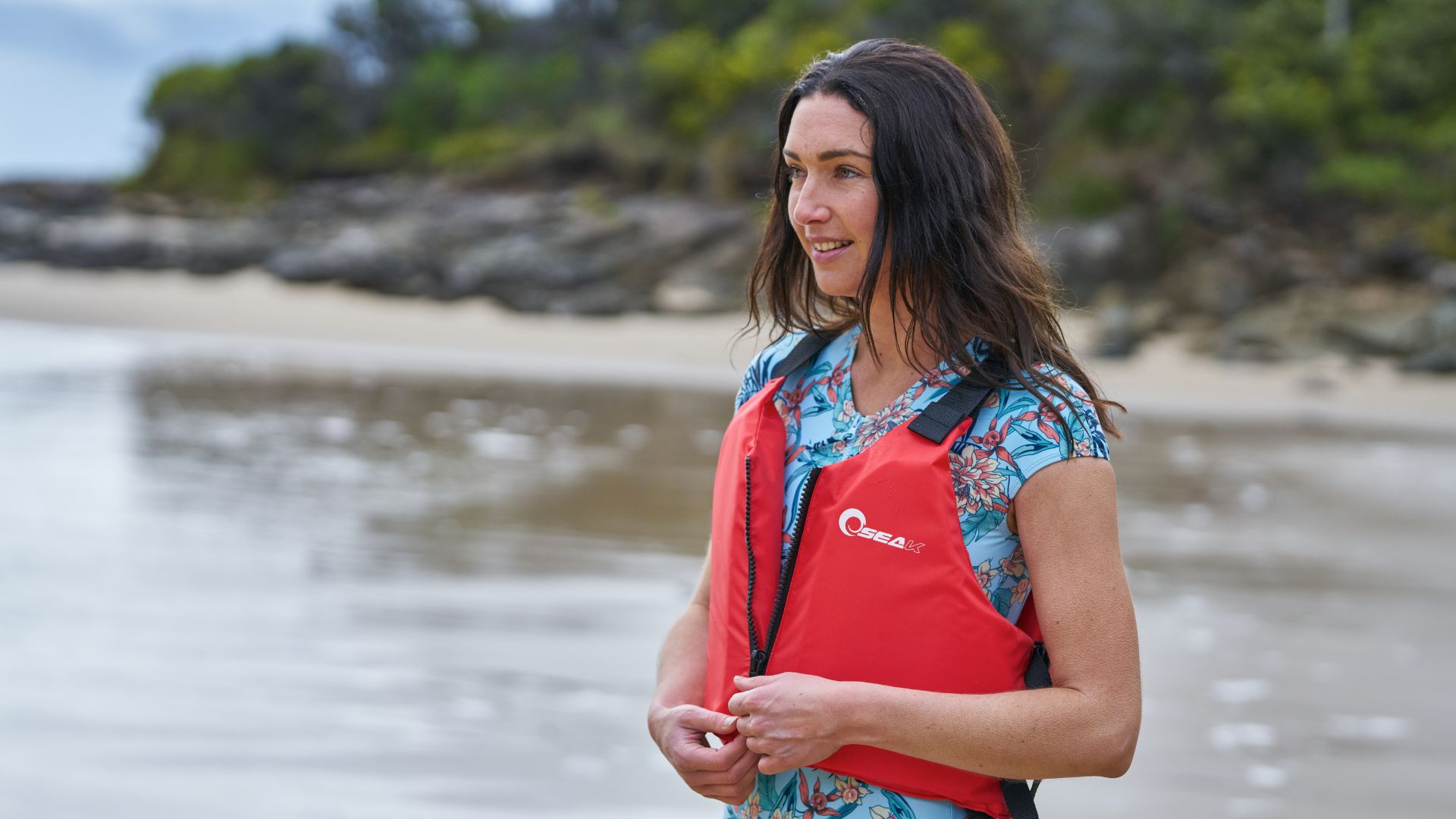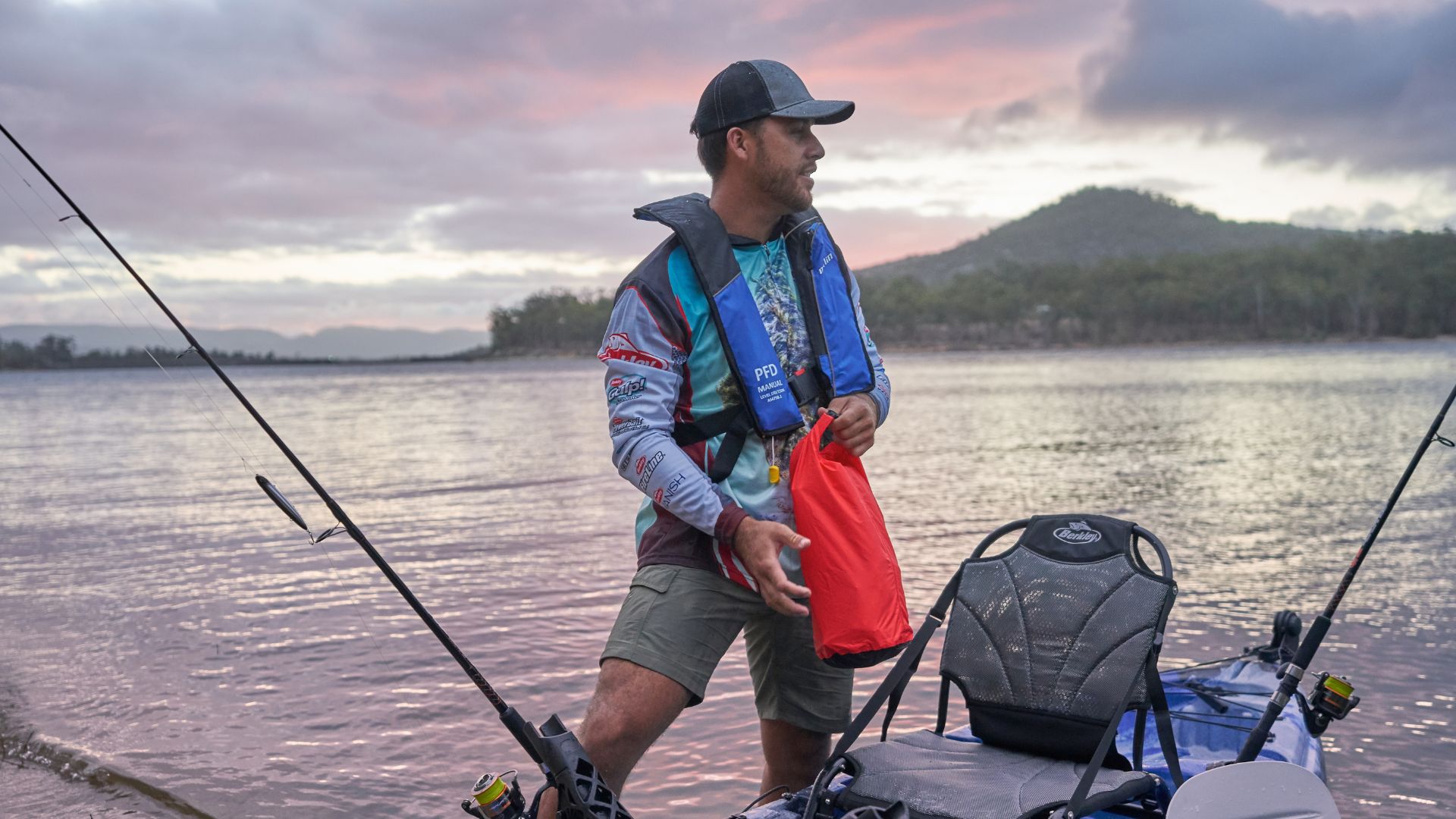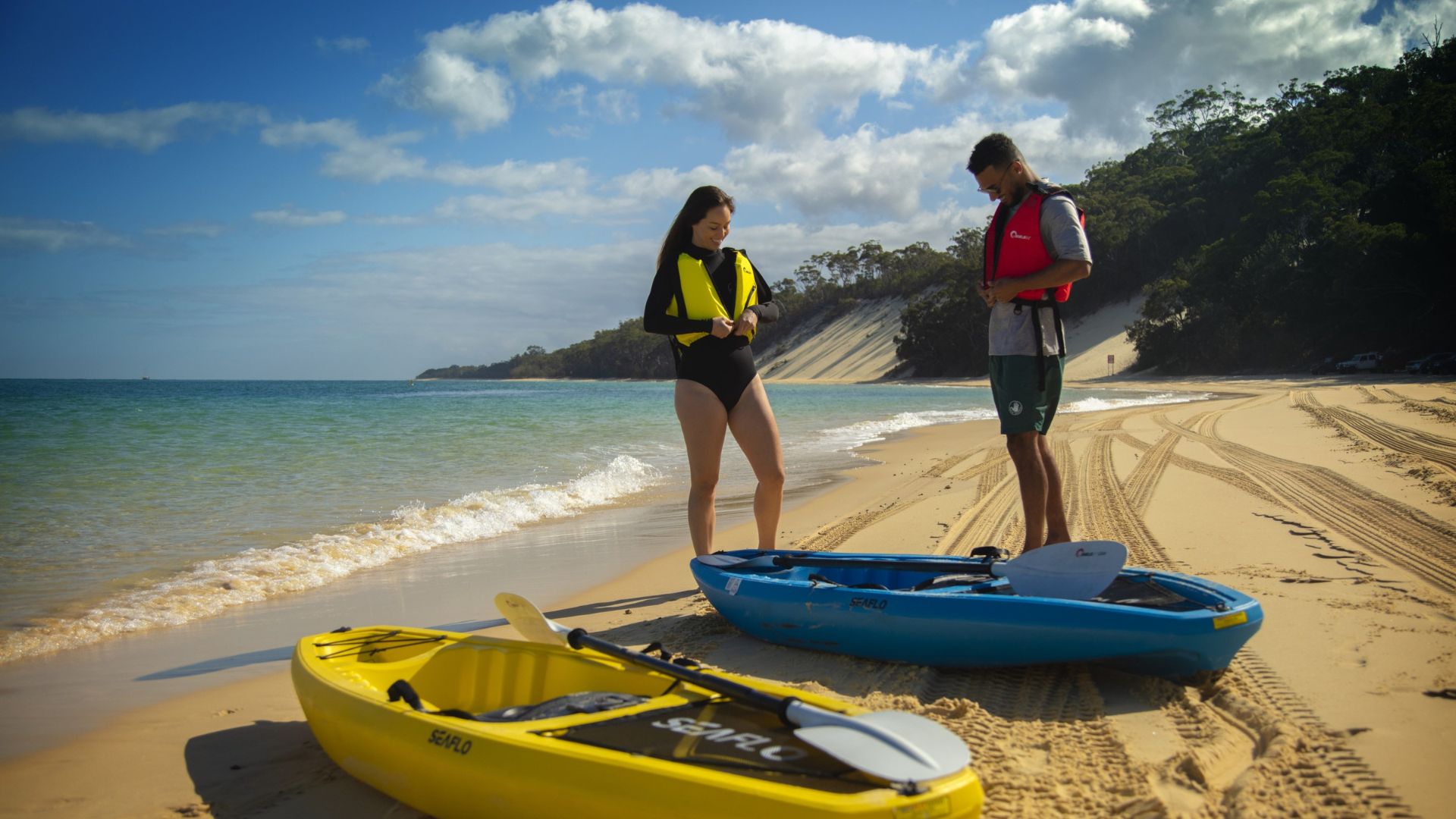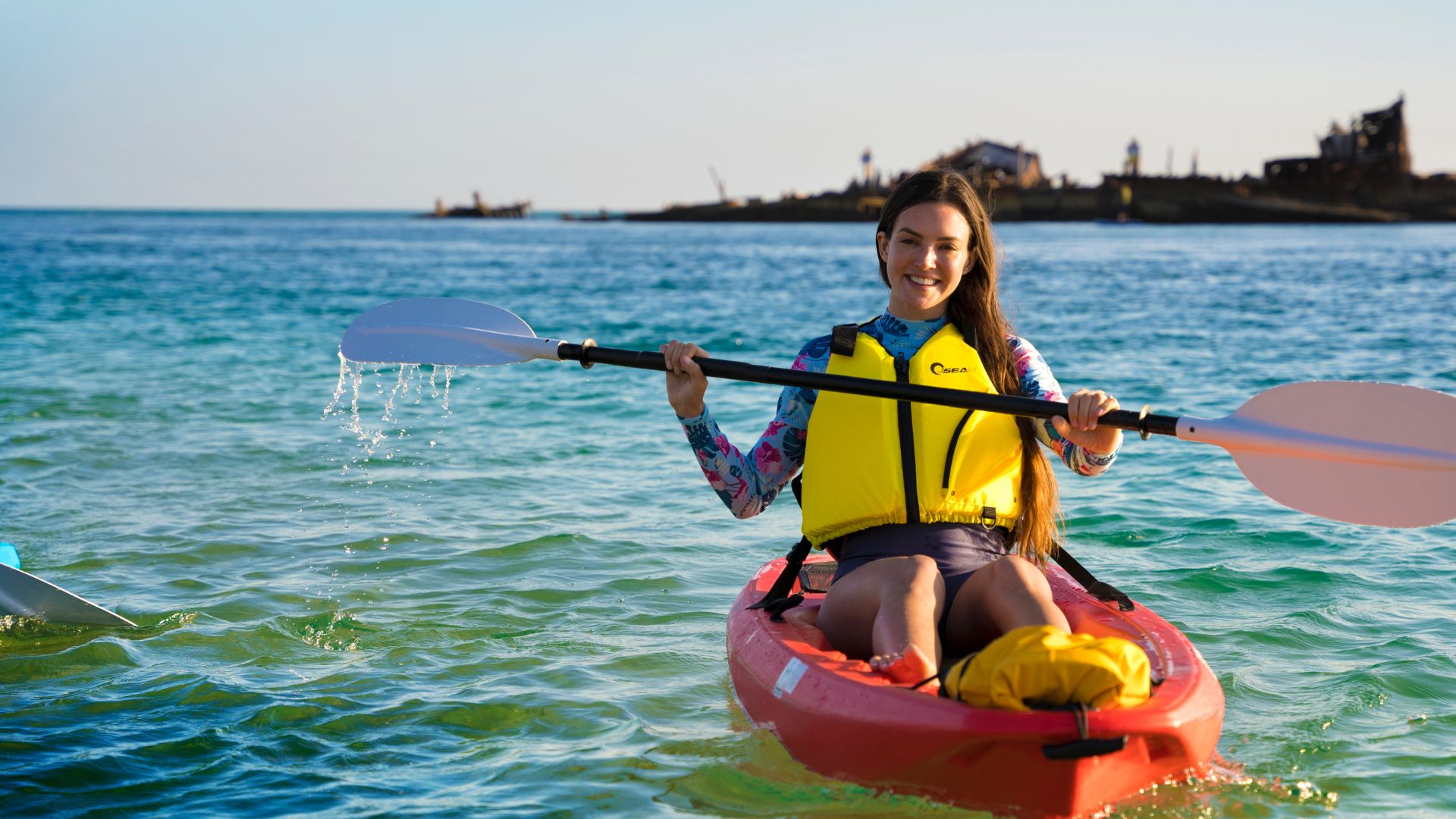| Your browser is not supported. | ||
|
Please browse our site using any of the following options:
| ||
PFDs Explained: Everything you need to know

Whether you call them life jackets, life vests or buoyancy jackets, they're all different types of Personal Flotation Devices (PFDs). PFDs are a must-have part of your water safety kit when you're boating, waterskiing, fishing, kayaking, or stand-up paddle boarding. In fact, having the right PFD that conforms to certain design standards is required by law whenever you head out on the water in a personal watercraft like a boat, kayak, SUP board or jetski. The primary function of a personal floatation device is to stop you from drowning by keeping you upright in the first instance but also by keeping your head above the water level until you can be safely retrieved without needing to tread water. The buoyancy offered by a PFD is a lifesaving benefit if you're unconscious or an injury prevents you from being able to use your arms. The other important function of a PFD is to make it easy for you to be seen in the water - either by friends, family or lifeguards in a non-urgent situation but also by rescue workers or emergency personnel if you find yourself in a situation where time is a critical factor for your survival. While on the surface they might all appear to be the same, most PFDs are designed to perform at their best for a specific purpose. Taking this into account, the best personal floatation device to use when you're out on your boat might not necessarily be the right one for kayaking. Similarly, the laws that govern personal floatation devices and their uses differ from state to state, so it pays to do a bit of homework before you go shopping.
Quick Links
Types Of PFDs

There are two main types of PFDs: Closed-cell foam and Inflatable.
Closed Cell Foam
Closed cell foam is a packaging foam that's able to withstand impact and doesn't absorb water. These types of PFDs are generally regarded as offering the best protection but, if not fitted correctly, can be uncomfortable. They're also regarded as offering better thermal protection than their inflatable counterparts.
Inflatable PFDs
Inflatable PFDs can be activated manually by pulling a tab or automatically inflate when they come into contact with water. Manually inflating PFDs should never be used by people who can't swim (unless they are worn already inflated) and are not recommended for use by children under 12 years of age. Excess spray can accidentally activate an auto-inflating PFD, so they shouldn't be used in a boat or jet ski or if you're being towed for waterskiing or wakeboarding.
Personal Floatation Device Ratings

From the get-go: All PFDs - whether you're using them on a boat or jet ski, for kayaking, SUP boarding or for inner-tube riding - MUST conform to Australian Design Standard AS4758.1. Prior to 2010, personal floatation devices were graded by Type (Type 1, Type 2 and Type 3). To align Australia closer to international standards and taking into account advances in PFD design and manufacture, PFDs conforming to AS4758.1 are now classed by buoyancy levels. Buoyancy levels are measured in newtons and determine how your PFD is best used. Basically, the higher the newton measurement, the greater the buoyancy.
There are six PFD rating levels:
- SOLAS
- Level 275
- Level 150
- Level 100
- Level 50
- Level 50S
SOLAS
SOLAS stands for Safety of Life at Sea. SOLAS PFDs are bulky life jackets, designed to keep the body afloat for long periods. They have a light and whistle attached to them to attract attention. These types of PFDs are carried by commercial vessels and are recommended for use on larger boats operating long distances from the shoreline.
Level 275
Level 275 PFDs are designed with the highest level of safety in mind. They are intended for offshore and rough weather when you're wearing clothes that could trap air and stop the lifejacket from turning you to a face-up position, or if you're carrying heavy items that mean you need extra buoyancy.
Level 150
PFDs with a BL of 150 can be used in all types of water conditions. They're the best choice for regular boaters who spend lots of time offshore in an array of different weather conditions and are made with high-visibility materials. They also feature a collar that will keep you afloat and support your neck, head and shoulders if you're unconscious. While these are at the top of the range in terms of buoyancy, Level 150+ and Level 100 PFDs have some limitations in terms of their use. Because of the collar that's built into them, they have the potential to cause serious neck or even spinal injury if you have a fall while wakeboarding or waterskiing. And they don't have a great range of movement, so paddle boarding and kayaking can become pretty hard work.
Level 100
Level 100 PFDs provide a really high level of buoyancy support for the wearer. Unlike PFDs with a BL over 100, these are more appropriate for use in near-shore water activities where the waters are generally calmer. Like their Level 150+ counterpart, they're not appropriate for waterskiing, wakeboarding, kayaking or SUP boarding and should be avoided in favour of a PFD with a lower rating.
Level 50
Level 50 PFDs are the best choice for activities like waterskiing, SUP boarding, kayaking and wakeboarding because they offer the kind of movement and flexibility you need for more active water sports, without compromising your safety. These PFDs don't have the bulky support collars of the heavy-duty life jackets, but they offer a great deal of head and neck support, making them ideal for use in smooth or calm open waters within two nautical miles from land. Level 50 PFDs can be bought in red or yellow safety colours, which means they're highly visible for attracting attention if you need assistance.
Level 50S
Level 50S PFDs are only for use in smooth waters like streams, rivers and lakes within a half nautical mile from land. The S in 50S stands for special purpose, so they can be used for kayaking, SUP boarding and waterskiing within the distance limits. 50S PFDs have no head and neck support, and they don't comply with colour requirements that make them easier to see the wearer when you need help in the water.
PFD Law

Each state and territory of Australia has different laws on PFD requirements. You should constantly check your state's regulations to make sure you're up-to-date with the latest laws and regulations. Regardless of where you're located across this vast country, your PFD must be the right level, the right size, in good condition and easy to find.
NSW and ACT
In NSW, recreational vessels must carry a PFD for each person on board. Everyone on a power or sailing boat over 4.8 metres in length is required to wear a Level 100 PFD when crossing coastal bars. On boats up to 4.8 metres long, everyone must be wearing a Level 100 or above in alpine waters, open waters or crossing coastal bars. A 50S can be worn on off-the-beach sailing boats. For personal watercraft, sailboards and kiteboards, rowing vessels such as kayaks and canoes and SUP boards, users must wear a PFD of 50S or above.
Victoria
In Victoria, you must wear a PFD on a boat at all times, and you must also ensure that every person under the age of 12 is wearing a life jacket when in an open area. On any kind of boat, you're required to wear a Level 100 or greater PFD in coastal and enclosed waters. On inland waters, you can wear a minimum 50S. On a personal watercraft, you must wear a 50S or higher PFD in coastal, enclosed and inland waters. Likewise, in a canoe, a kayak or a SUP board, you're expected to wear at least a 50S PFD.
Queensland
In Queensland, all boats must have lifejackets for all passengers and crew. It is compulsory to wear a lifejacket "when crossing a designated coastal bar in an open boat that is less than 4.8m in length, and if you are under 12 years old (from 12 months old and up to, but not including, 12 years old) in an open boat that is less than 4.8m in length and underway." Boat owners or skippers are required to give each person on board information about where safety equipment is kept and clearly sign where lifejackets are stowed. The labels must have the word 'life jacket' in red text on a white background or white text on a red background, PFDs in Queensland must comply with AS 4758.
South Australia
Everyone on board a motor boat 4.8 metres or less in length must wear a PFD in South Australia. The laws simply state that "everyone on board must wear a life jacket at all times when the vessel is underway or at anchor, the life jacket worn must be in line with life jacket wear requirements and the life jacket worn must be suitable for your activity." From 1 January 2025, PFDs that meet the older Australian Standards AS 1512, AS 1499 and AS 2260 will no longer be acceptable in South Australia. On boats over 4.8 metres in length, children aged 12 or under must wear a PFD at all times. In heightened risk circumstances, everyone on board must wear at 50, 50S or higher PFD in "semi-protected or protected" waters, and Level 100 or above in unprotected waters. In South Australia, "heightened risk" is defined as: When operating alone; When operating only accompanied by a child, or children 12 years old or younger; Operating after sunset or before sunrise; When the boat is disabled; When crossing an ocean bar; At times of restricted visibility; When in an area subject to a gale, storm force, hurricane-force wind, severe thunderstorm or severe weather warning issued by the Bureau of Meteorology (BOM).
Western Australia
A PFD has to be carried for each person (over the age of 12 months) on board a recreational vessel when operating in unprotected waters. Unprotected waters in Western Australia, are considered as navigable waters that are not contained: In a lake; In a river; In an estuary; or By any breakwater. People on board a personal watercraft (PWC) are required to wear a PFD operating the craft. If you're using a PWC between 400 metres and up to five nautical miles from shore in unprotected waters, you must wear a Level 100 PFD. When you're within protected waters or 400 metres of the shore in unprotected waters, you must wear a 50, 50S or greater PFD.
Tasmania
An approved life jacket must be provided for each person on board a boat in Tasmania. It is compulsory to wear a life jacket in any recreational motor boat or motor-propelled tender that is under six metres in length while under power. For kayaks, canoes or SUP boarding, Level 50 PFDs are mandatory in smooth and sheltered waters, while a Level 100 PFD is required in coastal waters.
NT
Northern Territory law requires you to have an approved PFD for each person on board in all water types. Level 100 PFDs are required on open and intermediate waters while a level 50 is suitable for inland waters.

Find All Your PFD Needs At Anaconda Today
Getting out and enjoying a day on the water is awesome fun, and a great way to appreciate the outdoors. Even though wearing a PFD is the law of the land, it's essential you don't just wear any device - make it the right one for your water activity so you've got the protection you need if an emergency strikes. Before you head out though, make sure you check out our Adventure Centre for more helpful tips and exciting destinations that you can visit with your friends, family and loved ones. If you liked this article on PDF laws and rules, then you might also like some of our other articles for tips and fun destinations such as:
- Fishing Glossary of Commonly Used Terms
- Fishing Licences in Australia
- Catch Bream: Anywhere, Anytime
- How To Modify Lures
Find your local Anaconda store and check out our extensive water sports range for your next outdoor adventure